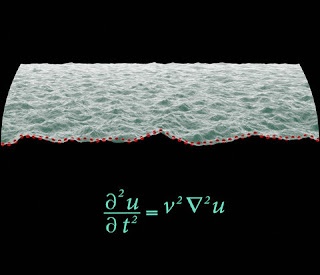The previous post in this series can be found here.
As a passionate believer in science, I have had many debates over the dinner table or at the bar with those who consider scientific research either unimportant or ineffective. The argument often comes back to “Well, science doesn't know everything!” To say this inherently misunderstands science and scientific research. Firstly, science doesn’t know anything; science doesn’t think or know - it simply is. Science is just what exists, it is everything. Everything must be explicable otherwise it couldn’t exist, even if understanding it is beyond the capability of humanity or any other intelligence. If God exists, He presumably understands Himself and so is explicable, to Him at least. I suppose that when people make the claim that “science doesn’t know everything”, they really mean “scientists don’t know everything”. This statement is obviously true, we don’t know everything, but it never fails to surprise me how little people often assume we do know. I don’t expect people to understand science in great detail, but it is a great shame that there is so much ignorance of the sheer amount of knowledge that we’ve gathered as a race. I have, in the past, been comprehensively informed that “we still don’t even know how genes work!”, which is very surprising news considering I thought I could explain in atomic detail how a gene is transcribed, translated and expressed as a protein – that is to say: how it works. An unfortunate mistake that many people often make is to confuse the statements “I don’t know this” and “nobody knows this”.
As a passionate believer in science, I have had many debates over the dinner table or at the bar with those who consider scientific research either unimportant or ineffective. The argument often comes back to “Well, science doesn't know everything!” To say this inherently misunderstands science and scientific research. Firstly, science doesn’t know anything; science doesn’t think or know - it simply is. Science is just what exists, it is everything. Everything must be explicable otherwise it couldn’t exist, even if understanding it is beyond the capability of humanity or any other intelligence. If God exists, He presumably understands Himself and so is explicable, to Him at least. I suppose that when people make the claim that “science doesn’t know everything”, they really mean “scientists don’t know everything”. This statement is obviously true, we don’t know everything, but it never fails to surprise me how little people often assume we do know. I don’t expect people to understand science in great detail, but it is a great shame that there is so much ignorance of the sheer amount of knowledge that we’ve gathered as a race. I have, in the past, been comprehensively informed that “we still don’t even know how genes work!”, which is very surprising news considering I thought I could explain in atomic detail how a gene is transcribed, translated and expressed as a protein – that is to say: how it works. An unfortunate mistake that many people often make is to confuse the statements “I don’t know this” and “nobody knows this”.
Perhaps this is to be expected; seen from the outside,
science probably appears very sporadic: there are long periods where nothing is
being discovered and then suddenly there’s a big finding and everyone gets very
briefly excited before everything dies down again. This, however, is simply a
product of the sensationalist way that it is often portrayed in the mainstream
media, in which everything deemed too complicated or insignificant is not
reported and things that do make the grade are often over-hyped. Following
science in this way is a bit like following literature only by watching
Hollywood adaptations of major novels. In fact, science progresses in tiny
steps that can seem insignificant on their own but contribute to the field as a
whole. Immunology is no different.





